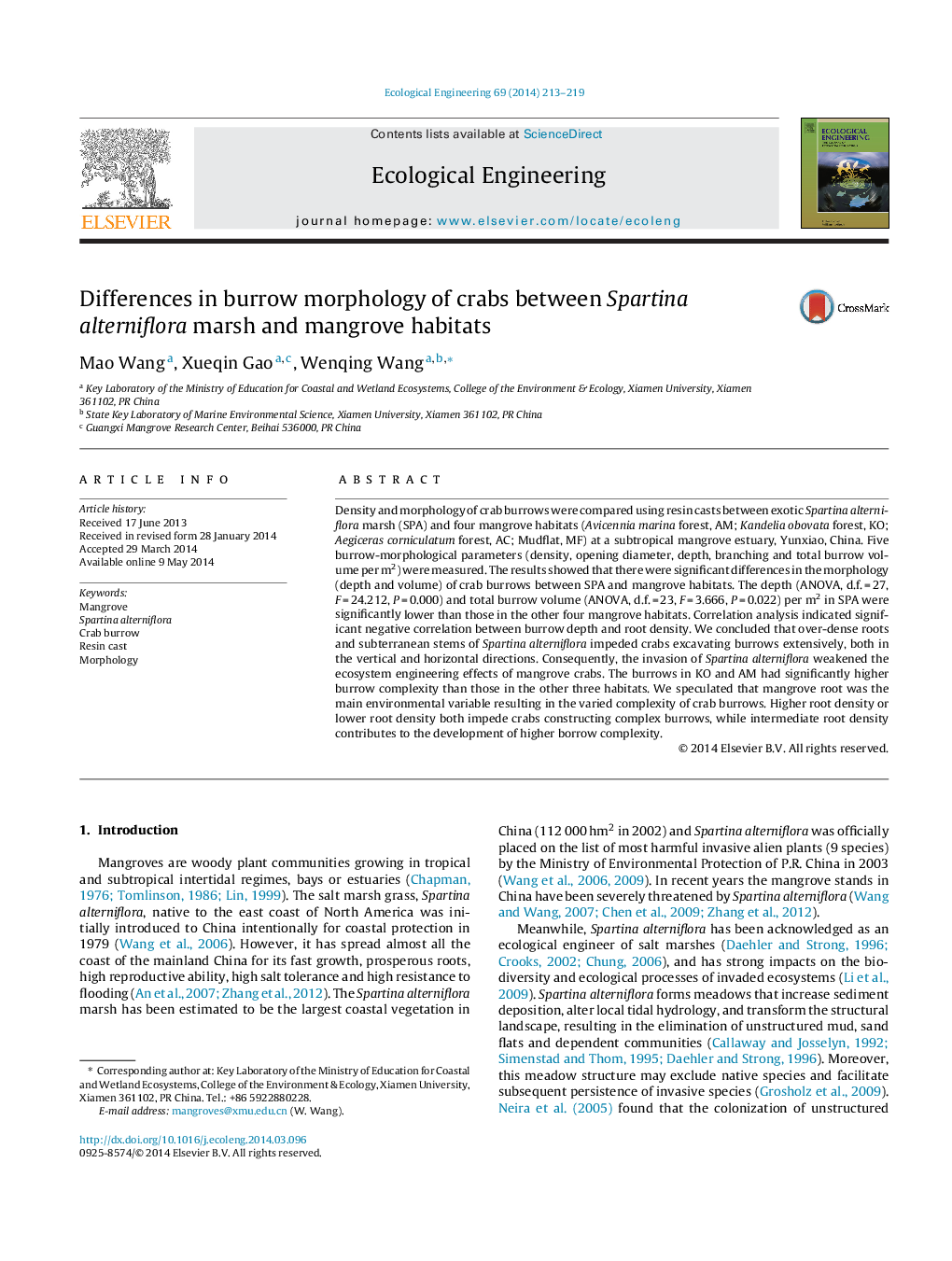| Article ID | Journal | Published Year | Pages | File Type |
|---|---|---|---|---|
| 4389394 | Ecological Engineering | 2014 | 7 Pages |
Density and morphology of crab burrows were compared using resin casts between exotic Spartina alterniflora marsh (SPA) and four mangrove habitats (Avicennia marina forest, AM; Kandelia obovata forest, KO; Aegiceras corniculatum forest, AC; Mudflat, MF) at a subtropical mangrove estuary, Yunxiao, China. Five burrow-morphological parameters (density, opening diameter, depth, branching and total burrow volume per m2) were measured. The results showed that there were significant differences in the morphology (depth and volume) of crab burrows between SPA and mangrove habitats. The depth (ANOVA, d.f. = 27, F = 24.212, P = 0.000) and total burrow volume (ANOVA, d.f. = 23, F = 3.666, P = 0.022) per m2 in SPA were significantly lower than those in the other four mangrove habitats. Correlation analysis indicated significant negative correlation between burrow depth and root density. We concluded that over-dense roots and subterranean stems of Spartina alterniflora impeded crabs excavating burrows extensively, both in the vertical and horizontal directions. Consequently, the invasion of Spartina alterniflora weakened the ecosystem engineering effects of mangrove crabs. The burrows in KO and AM had significantly higher burrow complexity than those in the other three habitats. We speculated that mangrove root was the main environmental variable resulting in the varied complexity of crab burrows. Higher root density or lower root density both impede crabs constructing complex burrows, while intermediate root density contributes to the development of higher borrow complexity.
